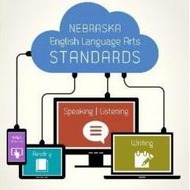"American Sonnet for My Past and Future Assassin" Hyperdoc
(View Complete Item Description)This remote hyperdoc activity was created by Katlyn Powers on July 24, 2020. The attached hyperdoc & lesson plan is designed for high school ELA students. Students will analyze and evaluate the elements of a sonnet, build background knowledge to clarify and deepen understanding of poetry, and use relevant evidence from a variety of sources to assist in analysis and reflection of Hayes' poem. This plan addresses the following NDE standards: NE.LA 10.1.5.C, NE.LA 10.1.5.D, NE.LA 10.1.6.F, NE.LA 10.1.6.I, NE.LA 10.1.6.L, NE.LA 10.1.6.M, NE.LA 10.2.2.BThis hyperdoc will take students approximately 90 minutes to complete.
Material Type: Lesson Plan, Module



















